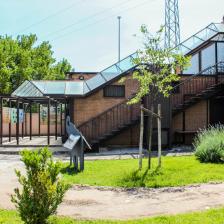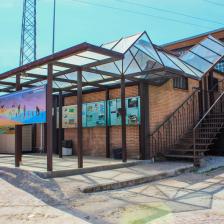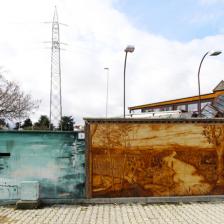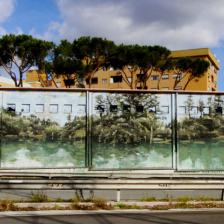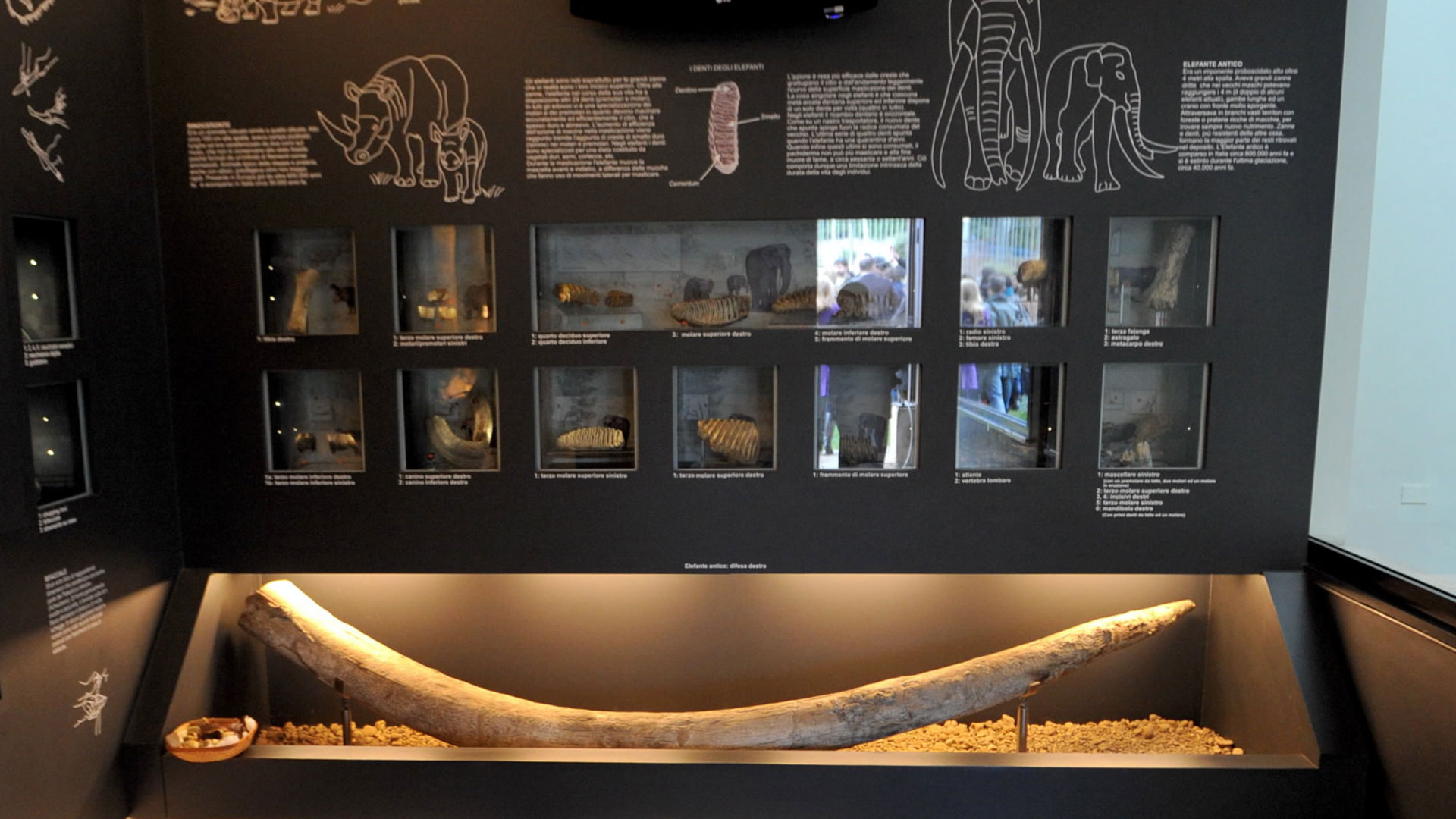
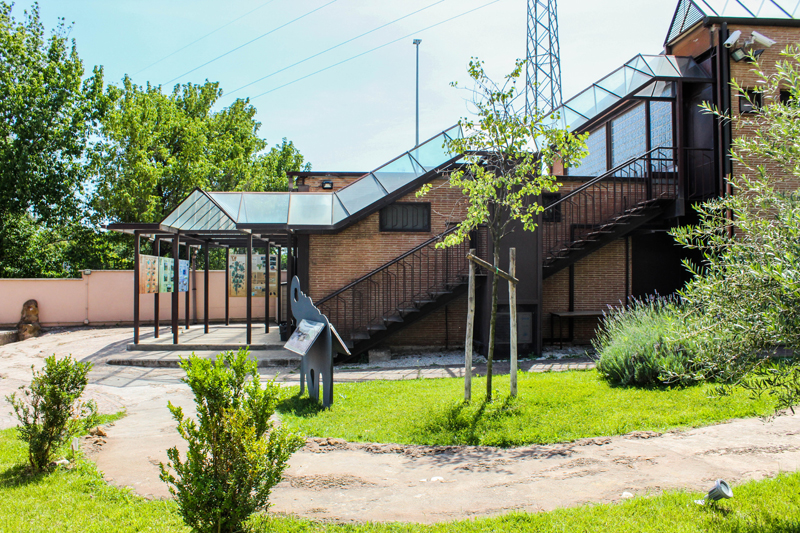
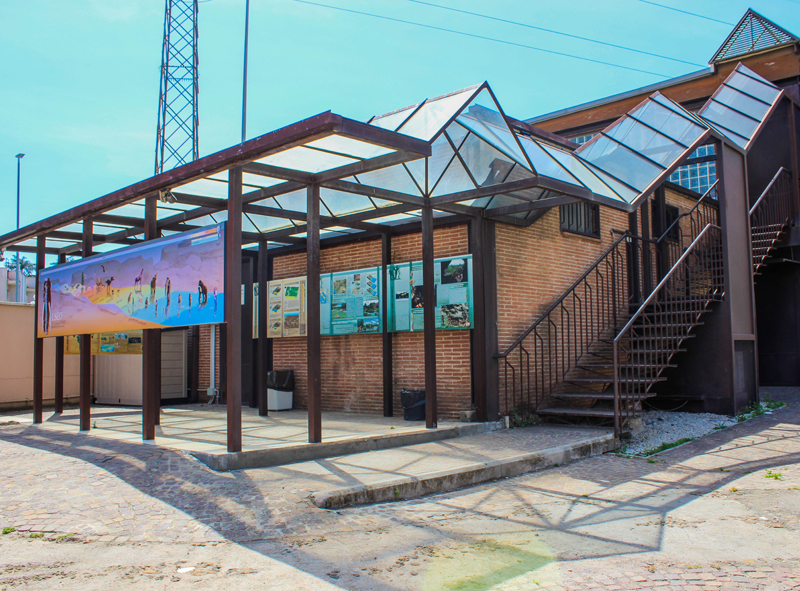
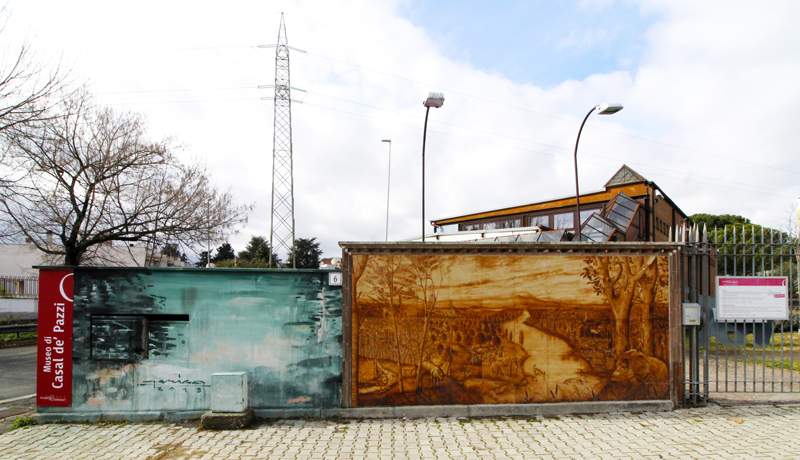
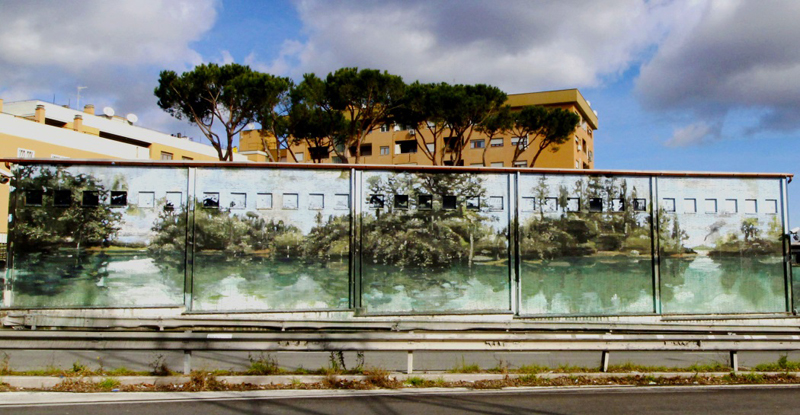
The history of the Casal de’ Pazzi Museum
The history of the museum began in the early 1980s with a most peculiar discovery: an elephant tusk found during construction of the Rebibbia district, preserved within a Middle Pleistocene geological deposit that had survived time and human actions. The discovery kicked off an archaeological investigation of an area of more than 1,200 square meters, revealing a portion of an ancient riverbed that flowed right where the museum structure now stands and was filled with gravel and sand over time.
The deposit dates back some 200,000 years and is the last vestige of a series of Pleistocene deposits that dotted the lower Aniene valley, which were destroyed as the city advanced. Thousands of artifacts dragged and deposited by the river’s waters came to light during excavations. Many of the animal fossils belonged to species unthinkable in today’s Roman countryside: the ancient elephant, the aurochs, the hippopotamus, and even the rhinoceros. A human skull fragment and more than 1,500 flint artifacts were evidence of the contemporary presence of humans.
A tour of the Casal de’ Pazzi Museum: fossils and 3D reconstructions
The museum is designed to provide an immersive experience. A walkway allows visitors to see the deposit from above, what remains after excavation: large pinkish boulders and fossil remains, with tusks up to 4 meters long, teeth, vertebrae. Suggestive projections with virtual reconstructions immerse visitors in the ancient Pleistocene landscape: thanks to computer technologies, the riverbed fills with "virtual" water and all around appear plants and animals, with a 3D reconstruction of the ancient elephant, the symbol of the site.
Some of the artifacts found are presented in the exhibition hall that overlooks the deposit with two large windows. In front of the entrance, several panels show the evolution of landscapes and life in the Roman countryside, from about 3 million years ago, when Rome had a sea, to the present day. The Pleistocene Garden surrounding the museum houses plants typical of the Pleistocene and, from February 2024, a multi-sensory, inclusive and accessible exhibition route. Consisting of 15 panels with relief illustrations and captions translated into Braille, it tells the story of the daily life of a group of Neanderthals reconstructed on illustrated relief boards.
From the past to the present: the mural “Riflessi”
The museum’s important Pleistocene deposit and numerous fossil specimens are also joined by a work of street art. On the museum’s outer perimeter wall in 2019, street artist Jerico Cabrera Carandang created a large mural, titled “Riflessi” (Reflections), which reconstructs the pre-existing naturalistic setting of the site in a visionary and enveloping way.
Information
Reservations required at 060608 every day from 9.00 to 19.00
From Tuesday to Friday 9.00-14.00
Saturday and Sunday 10.00-14.00
1 January 2024 timetable to be defined
Last admission one hour before closing time
Closed
Monday, 1 May and 25 December
For updates and guidelines please check the >official website
ALWAYS CHECK the WARNINGS PAGE before planning your visit in the museum
 Condividi
Condividi
Location
To find out about all accessibility services, visit the Rome accessible section.













































